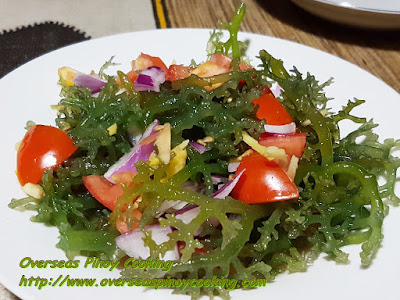

The seaweed salad now quite common in Metro Manila restaurants and known as lato. They're now cultivated in shore communities and exported raw or processed with a little salt.

There are five seaweed species in the Philippines: Guso (Eucheuma), Lato (Caulerpa), Sargassum, Gelidiella and Gracilaria of which the first two are the most popular.


This post features two versions of kilawin recipes with meat or fish replaced with ingredients from under the sea: seaweeds. Take kilawin for instance, a truly Filipino dish, simple and devoid of foreign incluences, even if similar to cerviche except the use of vinegar and not lemon. More than the usual tourist spots and "places to see," this blog advocates heritage conservation, environmental protection, and history awareness for Filipinos, foreigners, and ex-pats wishing to explore Paradise Philippines and Exotic Asia!įood trips are inextricably tied to travel where Tutubi tries to sample unique specialties and delicacies of all places he visits. Let us continue to protect our seas from pollution and illegal fishing so that we can enjoy these food sources from nature.Flight chronicles of the backpacker Tutubi, with travelogues, pictures/photos/videos, travel guides, independent and honest reviews, affordable, recommended resorts and hotels (including inns, guesthouses, pension houses, lodges, hostels, condotels, bed and breakfast and other cheap accommodations), commuting guides, routes (sometimes street maps and GPS coordinates/waypoints) and driving directions to answer "how to get there" questions, information and tips on tourism, budget travel and living in Philippines, Exotic Asia and beyond!īackpacking, independent travel, and flashpacking are cheaper than the "cheapest package tours" and promotional offers around but you can also use travel information for family vacations, even romantic honeymoon destinations. This food is rich in iodine, calcium, vitamins, and minerals.
#GUSO SEAWEED PLUS#
Guso, as salad, can be eaten raw or slightly boiled and mixed in vinegar or the native suka-tuba plus other spices. Guso is exported to other countries as a source of Carrageenan, a gelatin-like extract used as a thickener, emulsifier, and stabilizer in food, beverages, cosmetics, and pharmaceuticals. Its culture period usually takes 30-45 days. From small-scale farming, the industry has had enormous growth through the years and has expanded to neighboring coastal towns like Getafe with much success as this added to the income of fishermen.ĭepending on the location, the season for planting and harvesting seaweed varies, with some areas operating year-round, while others consider weather disturbances, diseases, water temperature, and salinity. In Bohol, guso are farmed for commercial purposes and food consumption particularly in Hingotanan, Bien Unido, Bohol since 1973. They have complex body structures that are anchored to rocks and corals with their rootlike “holdfasts” and their branched filaments. Seaweeds are an important food source for jellyfishes, crustaceans, sea turtles, and more, including humans. The Eucheuma cottonii belongs to the red algae (Rhodophyta) and grows in shallow reefs along rocky shorelines in tropical waters. Seaweeds are members of the marine algae family Protista. Today’s Marine Monday, your National Museum Bohol presents this nutritious food source from our marine ecosystem, the Seaweed (Eucheuma cottonii) locally called Guso.


 0 kommentar(er)
0 kommentar(er)
